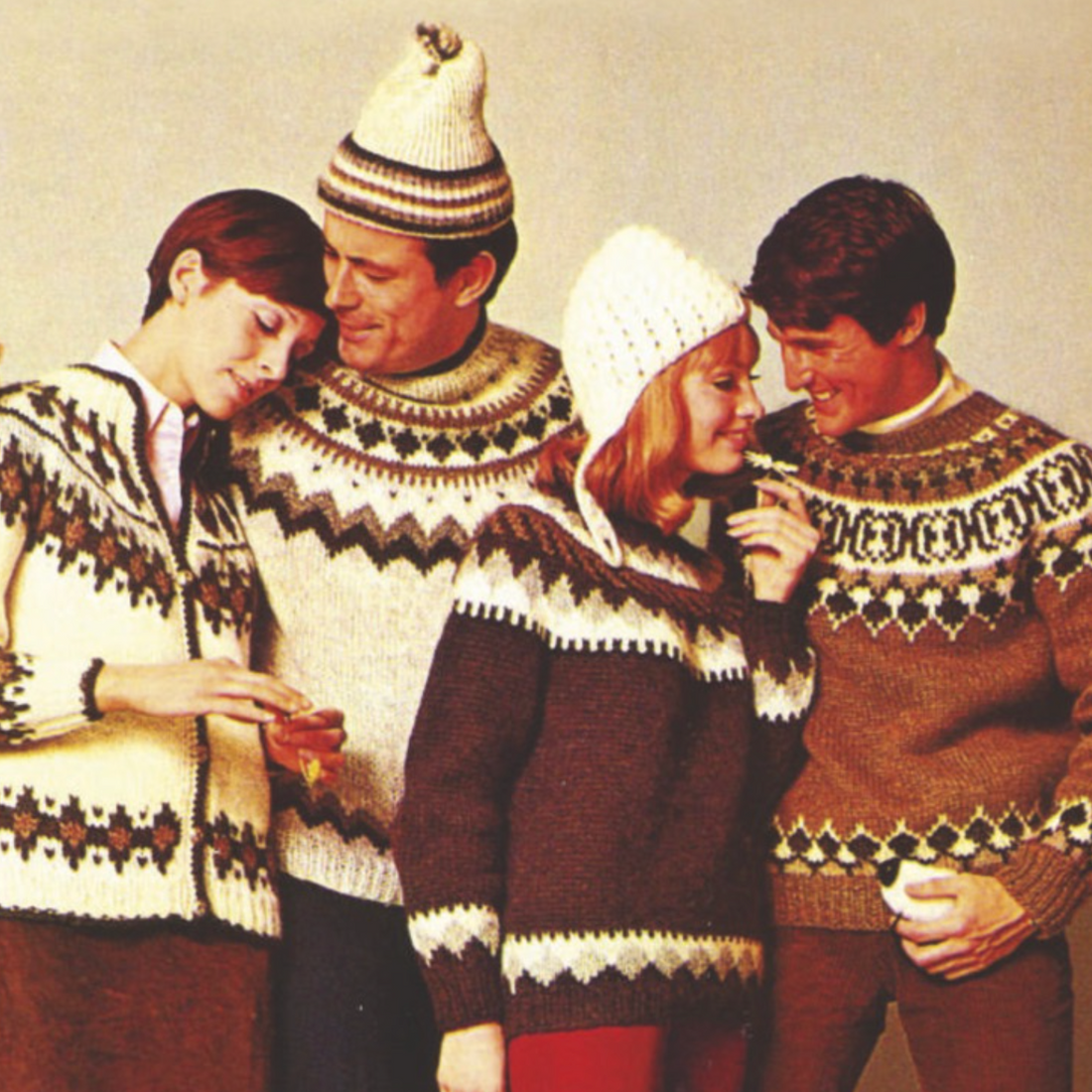
A Warm Embrace from Iceland: The Tale of the Lopapeysa
Icelandic writer Árni Árnason once said the lopapeysa “resembles the country’s rugged nature and reminds us of the history of farming and fishing, when it provided its wearer with a vital shield from the disastrous weather one can encounter in the wild.” The Icelandic sweater is exactly that: not just clothing, but a piece of lived history. Woven into its wool are stories of survival, resourcefulness and a deep relationship with the land.
 Icelandic sheep being driven down from the Icelandic highlands at the end of summer.
Icelandic sheep being driven down from the Icelandic highlands at the end of summer.
You might expect to see the lopapeysa behind glass in Reykjavík’s National Museum, catalogued as a relic of the 19th century or captured in old monochrome photographs. It feels ancient—almost timeless—an heirloom of Viking heritage. Yet the truth is more surprising.
When Norse settlers reached Iceland in the 9th century, they brought hardy sheep whose fleece evolved to withstand brutal winters. The wool—lopi, meaning unspun fibres—was warm, lightweight and water-resistant. It became essential to island life, spun and knitted into garments that protected families through long dark seasons. But the sweater we now recognise as the lopapeysa, with its distinctive circular yoke, did not appear until the mid-20th century. Its design grew from a mix of Scandinavian knitting influences and local ingenuity during a period of national revival.
 A traditional lopapeysa in natural colours: black, white, brown, gray, and beige. Imafe: Iceland Tours.
A traditional lopapeysa in natural colours: black, white, brown, gray, and beige. Imafe: Iceland Tours.
One story claims the round-yoke pattern was inspired by Incan textiles, after Auður Laxness, wife of Nobel Prize-winning writer Halldór Laxness, saw illustrations in a book her husband brought home. Others argue the style evolved more organically; Icelandic women had already been experimenting with similar patterns. Like many good origin stories, the truth is probably somewhere in between.
What is certain is that the lopapeysa became a symbol of Icelandic identity in the 1950s. At a time of economic uncertainty, knitting turned from a domestic skill into a cultural force. Local artisans used what they had—wool, tradition and patience—to create garments that expressed national pride.
 Knitting a lopapeysa with lopi (wool).
Knitting a lopapeysa with lopi (wool).
The lopapeysa is instantly recognisable: a ring of geometric patterns encircles the shoulders, often inspired by Nordic motifs. The circular construction is practical, distributing warmth evenly against the cold. There is a frankness to it, a sense of strength without fuss—qualities Icelanders tend to admire.

1960's winter ski fashion. Photo: Ingimundur Magnusson 1931-2021. Courtesy of the National Museum of Iceland archives.
Today, the lopapeysa is still worn across Iceland, whether pulled on before a snowstorm or thrown over a shirt on a bright summer night. Designers such as Steinunn Sigurðardóttir, Hélène Magnússon and Brynja Sverrisdóttir are reworking the tradition with new colours and forms while keeping the soul of the craft intact. As Brynja says, “There is a raw elegance to the lopapeysa—a sense that when you wear it, you’re wrapped in history and hope.”
Far from being a nostalgic curiosity, the lopapeysa has found new relevance in today’s search for sustainable, meaningful fashion. It endures because it is honest: a quiet record of hands at work, sheep on wind-scoured hills and a small island that learned, long ago, how to stay warm.
Words: An edited extract from a feature by Souvik Ghosh.
-
Further information:
-
Image Credits:
Lead: Istex knitting pattern from 1960, as featured in 'A NATION IN SHEEP'S CLOTHING' Selvedge Issue 80, Craft
All further images as credited in photo captions.
